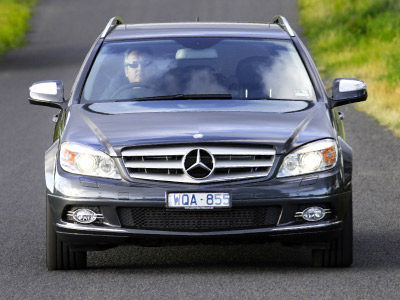In the decade since 1998, diesel models increased from 1.25 to a healthy 22.25 percent of Benz’s Australian sales mix. Despite this, the supercharged four-cylinder petrol C200K remains the preferred choice for C-Class buyers, with a dominant 62 percent. The C220 CDI ranks second of the five C-Class engine options, claiming 16 percent of sales. But, along with AMG’s mighty 6.2-litre V8, the four-cylinder diesel has only just become available in the Estate.
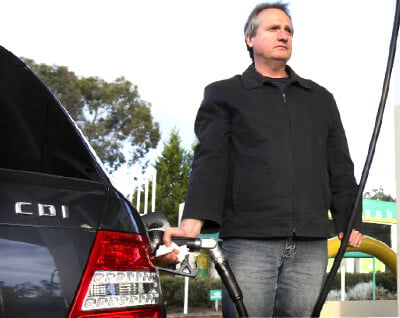
The change-over means our long-term Estate is now motivated by a 125kW and 400Nm 2.1-litre diesel, in place of the slightly more powerful, but markedly less torquey, 135kW and 250Nm 1.8-litre petrol four mit blower. The difference, as you might imagine, is substantial, with all that extra torque available at lower revs making for a more relaxed driving experience.In truth, we had few problems with the smooth and energetic supercharged petrol four, but with just $4400 separating the two in our chosen Avantgarde spec, we’d opt for the diesel, due to its superior torque and better fuel economy. This, plus the fact that, in increasingly energy-conscious times, you’re likely to get the premium back at resale.
We haven’t traded spec for spec, however, and have swapped some desirable features such as the AMG sports pack and Easy Pack tailgate, for others like the COMAND telematics (sat-nav) system ($3202), dark tinted rear windows ($823) and active headlights ($326). Other options fitted to the C200 CDI include metallic paint ($1557), and protective undershield ($244), while black leather upholstery comes ‘standard’ as part of the $4668 Avantgarde package. Like its predecessor, WQA-855 also gets the $3692 Vision package (bi-xenon headlights, electric sunroof and 12-speaker Harmon Kardon sound system) to tip the scales at a slightly lower RRP of $76,505.
Benz’s nervous PR man will be happy to see the switch to diesel has immediately shaved 1.5L/100km off the C200K’s overall average. It’s likely this is as bad as the C220 CDI gets, given low total kays and exclusively urban running thus far.
Update #1
By Ged Bulmer
Aside from a surging wave of turbocharged torque summoned at the flex of an ankle, the big difference between our new C220 CDI and recently retired C200K Estates is in the area of ride and handling.
Quite why this should be the case remains the subject of some speculation, as neither car is fitted with the optional Dynamic Handling Package, and both ride on the 17-inch wheel and tyre package, albeit the former on a six-spoke AMG alloy, the latter on a five-spoke.
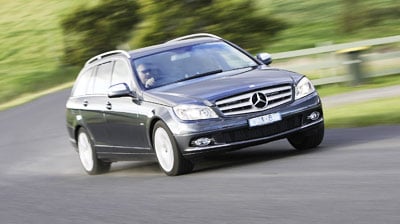
Perhaps there’s a weight difference between the supercharged petrol four and the turbocharged diesel four.
Regardless, and despite the absence of a plausible explanation from Benz HQ, I’m convinced that the new diesel rides more softly and has a touch less suspension discipline than its predecessor. The difference was first noticed over speed humps, where the nose of the CDI gives an extra nod where the Kompressor’s suspension would restrict any extra oscillation.
You notice it when cornering too, with the CDI proving marginally less accurate through bends, running a little wider and being moved off line that bit more easily by humps and bumps in the road.The trade-off for this somewhat less disciplined handling is superior ride quality. The C200K was never overly firm, at least not in the manner of a 3 Series on run-flats, but there is a discernible difference between the two, and comfort-oriented drivers will favour the 220 CDI.
Surprisingly, given assumptions about diesels and turbo-lag, the CDI feels like it steps off the mark more assertively than the 200K, and you tend to waft along in it, using less throttle than was required to keep the revvier supercharged four on the boil.
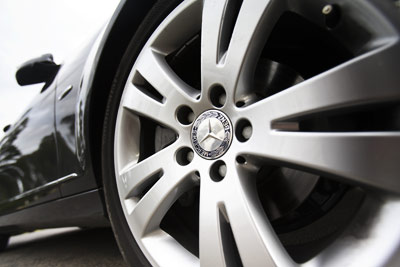
I’ve also found that where I mostly drove with the 200K’s five-speed auto in ‘sport’ mode, to sharpen throttle response, the diesel feels more at home in ‘comfort’.
As expected, the chance to get the diesel out of town and onto the open road brought instant efficiency improvements, with last month’s 10.3L/100km average falling to a 9.1L/100km. This figure came via a 448km urban fill at 10.4L/100km, and a 737km mixed urban/rural at 8.3L/100km.
Update #2
By Ged Bulmer
One of the most endearing features of the C-Class is its steering, the excellence of which serves as a constant reminder of the quality and depth of engineering that helped the sedan snare our 2007 COTY gong.
Good steering should be seamless, offering the right level of assistance in the urban environment, so as to not be noticed, but delivering reasonable feedback, weight and accuracy when the driving turns spirited.
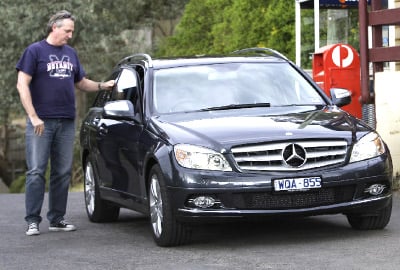
And we have an Australian company to thank for it. Like several other contemporary Mercs, the C-Class is equipped with what Benz calls ‘Direct Steer’. Designed and developed by Sydney-based Bishop Steering Technology, ‘Direct Steer’ is Benz speak for Bishop’s internationally renowned variable ratio steering rack. Or, put into slightly more technical terms, ‘speed- sensitive rack and pinion power steering, with a variable rack ratio’.It’s that last bit that makes the Benz steering just a little bit different, by changing the level of assistance as a function of the steering angle, so that the more steering angle you apply, the more assistance you get. It’s simple, elegant and works a treat.
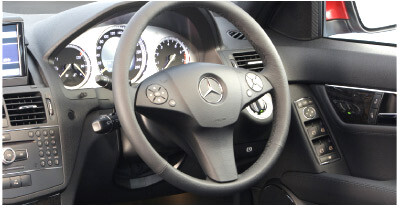
It’s possible to be fooled by the initial impression that the steering is too light, but spend a little more time at the wheel and you soon begin to appreciate the rack’s directness (just 2.7 turns lock-to-lock), as well as the steering precision and sensitivity.
Pleasingly, there’s been no evidence of rack rattle, in this or the previous C200K Estate, despite the fact it was experienced occasionally during Wheels COTY testing.
There’s nothing particularly special about this month’s average, until you consider that both fills (11.6LL/100km and 10.9L/100km), were recorded in 100 percent urban driving, at an average speed of 25 and 29km/h respectively. Given some open road, the C220 CDI will improve.
Update #3
By Ged Bulmer
I’ve never been much chop at goodbyes, so it’s likely a blessing that I missed the chance to reacquaint myself with the C-Class Estate before its recent repossession by Mercedes-Benz Australia.
Well, ‘repossession’ is perhaps a bit harsh but, like the C200K that preceded it, there was barely enough time to empty the C220 CDI’s glovebox, following a call from Merc’s PR chap (himself an ex-repo man, coincidentally), before the transporter arrived. Moments later, I was waving goodbye to the comfortable and capable gun-metal grey Estate I’d grown so fond of.
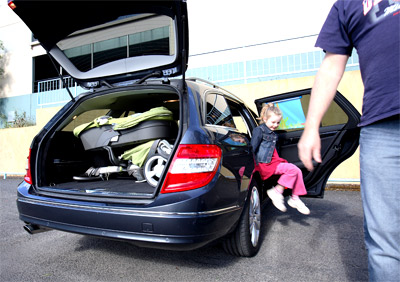
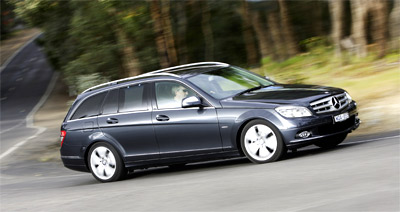
The tight turning circle, good ride and delightful steering remained a source of enjoyment to the very end, as did the performance of both engines. Having initially experienced the smooth, supercharged petrol four, and later the torque-laden turbo-diesel four, I’d happily take either, but do prefer the diesel’s driveability.
Importantly, our 8000km test ends with Benz’s reputation for quality and reliability intact. Both cars remained drum tight throughout the test and neither even hinted at a problem.
While we all understand that you pay a premium to drive a Mercedes-Benz, it’s nice to prove for yourself that it’s worth it.Perhaps it was my inability to get the the diesel Benz anywhere near its ADR81 figure of 6.8L/100km that finally broke the Benz PR man’s resolve. Our overall average of 10.1L/100km needs to be seen in the context of predominantly short-hop urban use. Best on test was 8.3L/100km.

